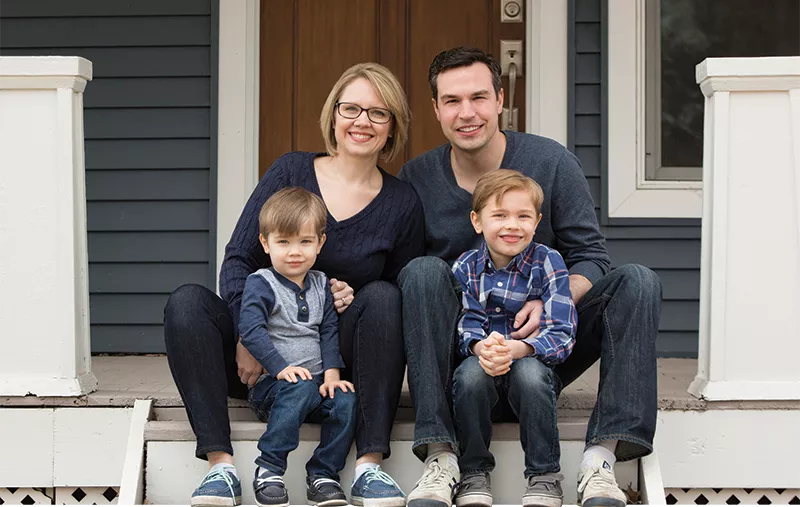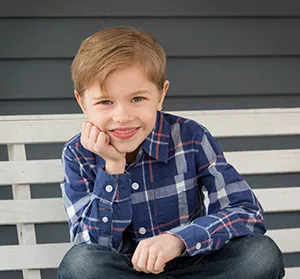Architect as advocate for families

Talk about a job training program. In 2013, architect Luke Leyden learned more than he could have imagined about designing hospital rooms. His colleagues didn’t provide the insight, though. Parenting did.
Luke was on a business trip on the West Coast when his young son in Iowa City became violently ill. Luke’s wife, Anne, took 4-year-old Owen to a local hospital. When tests showed the boy had contracted E. coli, doctors referred the family to University of Iowa Stead Family Children’s Hospital.
Luke was already familiar with the hospital. He is part of the team designing the new children’s hospital. Luke flew back to Iowa, where he quickly learned how serious E. coli can be.
Owen was treated with intravenous fluids to prevent dehydration. In most cases, patients gradually recover. Not Owen. He became one of about 10 percent of E. coli patients to develop a dangerous condition known as hemolytic uremic syndrome, or HUS. HUS is a disorder that usually occurs when an infection in the digestive system produces toxic substances that destroy red blood cells, causing kidney injury. Unfortunately, HUS can be fatal if children do not receive the proper medical care.
As a result, Owen’s kidneys shut down. His whole body became puffy, and he needed dialysis. Surgery was performed to install a catheter in his stomach. After that, he began peritoneal dialysis. Slowly, his kidney function began to return.
“The care was amazing,” says Luke, “and the nurses and doctors were awesome.”
Nurses and child life specialists did whatever was necessary to keep Owen comfortable, Luke says. And Owen’s doctors spent a lot of time with Luke and his wife. “They sat down and went through all of our questions and made sure we had all the answers we needed,” he explains.
During his son’s 16-day stay, Luke often spent the night with Owen so his wife could stay home and care for their infant son, Miles.
After Luke returned to work, he was eager to share his new-found viewpoints as a parent of a hospitalized child. Luke met with leaders at UI Stead Family Children’s Hospital, who were grateful for his input. Many of his observations were already being addressed in the design of the new hospital.
Luke’s experience continues to shape his work. “It made it much more personal,” says Luke. “It gave me renewed determination to make sure whatever I could do to make another parent’s stay better, I would try to do.”
When he tours the mock-up rooms for the new hospital or discusses hospital design, he recalls his time as the parent of a sick child. “I can say, ‘This is a good thing,’ or ‘This is not a good thing,’” he explains. Doing so allows him to “become an advocate for families through the design process.” And a powerful one at that. “Having empathy [for our families] is one thing,” says Luke. “Living it is another.”
What does he want others to know about the new children’s hospital? He says some hospitals are designed to fit as many rooms on a floor as possible to save money. Other hospitals choose to make work easier for care teams, even if it is not ideal for patients.
“This hospital is very unique,” he says. “All of the details have been looked at from the point of view of how to provide the best patient care and the best patient experience.” Luke, more than most people, knows just how important that is.

Today Owen is a happy, active 7-year-old. Because of his illness, he sustained an acute kidney injury. He must stay well hydrated to keep his kidneys in as good a condition as possible for as long as possible, says his father. Once a year, Owen returns to UI Stead Family Children’s Hospital to get his kidney function checked.
The Leydens are grateful for the care Owen received. “We are so happy that UI Stead Family Children’s Hospital is here,” says Luke. “They knew exactly how to treat [his condition] and, from the very beginning, they knew what to do.”